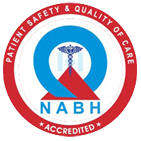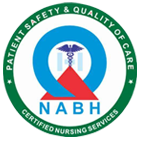FOLLOW THE MISSION HOSPITAL




Acupuncture is an ancient Chinese system of health care. It aims to prevent and cure specific diseases and conditions by sticking very fine, solid needles into points of the body.
Acupuncture stimulates the body’s ability to resist or overcome illnesses and conditions by correcting imbalances. Acupuncture also prompts the body to produce chemicals that decrease or eliminate painful sensations.
There are hundreds of acupuncture points (called acu-points) along the body’s 14 major meridians, or energy-carrying channels. Sixteenth century Chinese doctors used the term “Qi” (pronounced “chee”) to describe the energy that circulates through meridians. The belief is that illness is caused by a disruption of Qi, which leads to an imbalance of energy. Acupuncture can correct this energy disruption.
There are many theories as to how acupuncture actually works. When acupuncture points are stimulated, it causes a dull ache or other sensations in the muscle. One theory holds that the stimulated muscle and sensory neurons send a message to the central nervous system (the brain and spinal cord), causing the release of endorphins (naturally produced pain killers) and other neurotransmitters (body chemicals that modify nerve impulses), which help block the message of pain from being delivered to the brain and have other regulatory effects as well.
Other experts believe that acupuncture works by transmitting signals via the fascia. Fascia is like a thin sheath that surrounds all of the body’s muscles. Some acupuncturists consider the meridians to represent myofascial chains – which helps explain why stimulating an acupuncture point in the lower leg can affect the back or other areas. Interestingly, research shows that acupuncture points have a lower electrical resistivity than surrounding areas. In a practical sense, the meridian system provides a navigable energetic map of the body for acupuncturists to locate and treat many conditions.
After your condition is discussed, the acupuncturist will examine you for reactive areas to determine which points to use. Acupuncture needles are sterile, pre-packaged, disposable, and hair-thin. The needles are placed at various depths, ranging from a fraction of an inch to two inches. Wear loose fitting clothing (gowns are provided), as you will have to partially disrobe in order to receive acupuncture. Exercise good hygiene but don’t come heavily perfumed as many patients have chemical sensitivities. After the needles are inserted and stimulated, they stay in place from a few minutes up to 20 minutes.
In a treatment series, the acupuncturist will use different combinations of points and different needling techniques. These combinations help stimulate new sources of healing as the patient’s response to treatment is observed.
Although acupuncture is not a “cure-all” treatment, it is very effective in treating several diseases and conditions. Acupuncture is most effective at treating chronic pain, such as headaches, menstrual cramps and low back, neck or muscle pain. It can also be used to treat osteoarthritis, facial pain, spastic colon, and repetitive strain conditions. Acupuncture also can improve the functioning of the immune system (the body’s defense system against diseases).
For certain conditions, such as cancer, acupuncture should be performed in combination with other treatments.
You may feel a slight prick when the needle is inserted, but it is much less than the prick you feel during an injection, since the needles are much thinner.
You may feel a heaviness, numbness, tingling or mild soreness after the needles have been inserted. A feeling of deep heaviness or numbness, called “Deqi” (pronounced duh chee) means the treatment is working. The patient tells the acupuncturist “yes” when he or she feels this.
Yes. When acupuncture is performed with disposable needles under clean, sterile conditions, it is highly unusual to have any complications.
One of the advantages of acupuncture is that the incidence of adverse effects is substantially lower than that of many drugs or accepted medical procedures used for the same conditions.
There are many different styles of acupuncture. Practitioners of Acupuncture Physical Medicine (APM) palpate the body (examine the body by touch) to locate reactive areas and myofascial (muscular) constrictions. Points are selected and stimulated to relieve symptomatic areas based on the relationships of meridian acupuncture theory. Practitioners trained in APM also locate and deactivate “trigger points” using an advanced needling technique. Triggers points are extremely common in pain conditions and cause referred pain and other symptoms of dysfunction in nearly everyone’s life at one time or another.
It is best to bring someone with you on your first acupuncture treatment so that you will have transportation home. This is because acupuncture has a very calming effect. You may feel overly relaxed after the treatment and shouldn’t drive. No matter how good you feel after the treatment, it is important not to overextend yourself. You should take it easy for a few days after the treatment. In addition, it is important to continue taking your prescribed medications.
The number of treatments required depends on each person’s condition and response to acupuncture. One acupuncture session does not usually result in relief of pain. One or two sessions a week for five to six weeks is the normal course of treatment. Your physician will discuss with you how many treatments you should have and how often you should have them.
Don’t rely on acupuncture for treatment of chronic or serious illness unless you see a physician first. Acupuncture may not be the only way to improve your condition. Your health care provider may recommend acupuncture treatment along with other treatment methods such as physical therapy or medication.
In addition, try acupuncture for at least 5 or 10 treatments before giving up.
Yes. There are more than 16,000 licensed acupuncturists in the United States and 3,000 physicians who perform acupuncture as part of their medical practice. The World Health Organization currently recognizes more than 40 medical problems -- including pain, gastrointestinal, gynecological, and respiratory conditions as well as sports injuries -- can be helped by acupuncture treatment. Lastly, in 1996, the U.S. Food and Drug administration (FDA) reclassified acupuncture needles, regulating them as it does other medical devices. Acupuncture needles most now be manufactured according to single-use standards of sterility and are intended for general use by qualified practitioners.
Some insurance companies will pay for acupuncture treatment. Because each insurance provider has different restrictions, it is best to consult with your provider to determine if your treatment will be covered.

A Unit Of Durgapur Medical Centre Pvt. Ltd.